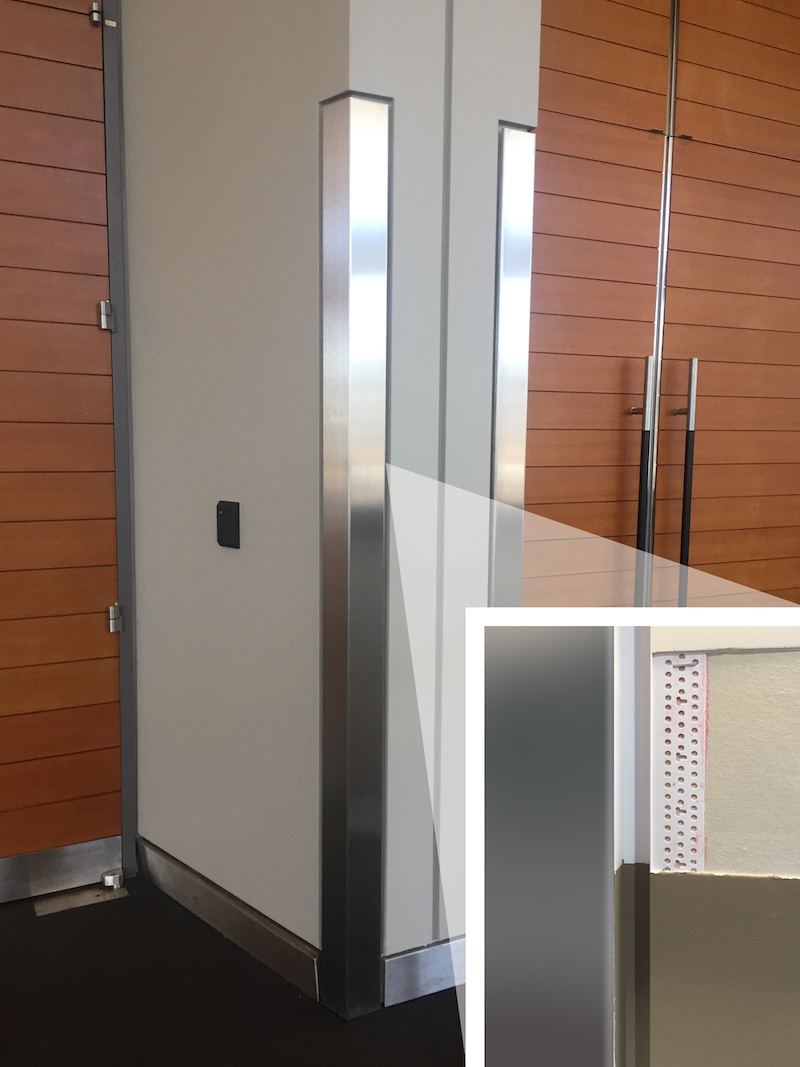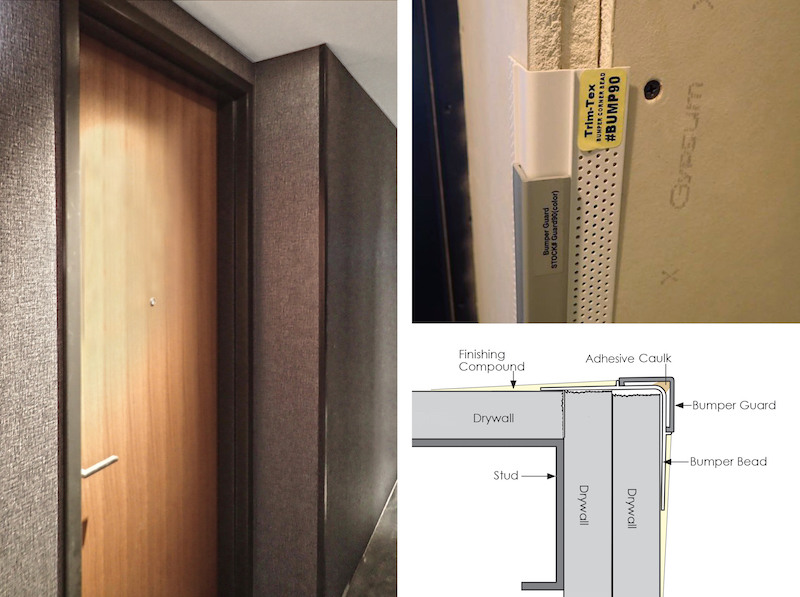When designing a building, architects take great care in defining the space, understanding and optimizing the use of space, and ultimately, creating a design that will be not only eye-catching, but functional. Good design ensures that the space is utilized well and that it will survive for many years to come.
This is why interior finishing is so crucial: good interior finishing adds beauty to the space while also ensuring the construction’s durability. Additionally, investing in good interior finishing will lower long-term cost to the building’s owner and tenants. Interior finishing has a profound effect on a space’s safety and durability.
In this vein, drywall is a popular interior finishing material because of its cost-effectiveness. In addition to being an inexpensive material, it also provides good fire resistance. However, drywall sheets can be fragile, especially at the porous edges. When used in high-traffic spaces (like commercial interiors), or high-energy spaces (like homes with small children), the opportunity for collisions with drywall edges are elevated. Finishing those edges, especially corners, with a durable material makes them resistant to impact and will reduce the cost of repairs during the entire lifetime of the building.
Rigid vinyl finishing is particularly advantageous at providing corner protection. Unlike traditional metal corner protectors, vinyl is flexible enough to spring back to shape after impact– metal can dent permanently, necessitating otherwise avoidable repairs. Vinyl also avoids the corrosion problems inherent with metal corner finishing.
 Right detail shows shadow bead installation process with drywall compound and paint. Location, Boston Convention and Exhibition Center.
Right detail shows shadow bead installation process with drywall compound and paint. Location, Boston Convention and Exhibition Center.
Of course, interior finishing is about style as much as function, and fortunately, corner protection products are available in any number of styles. Within these many finishing styles, “flush” corner protection stands out for its appealing modern sensibility. Corner protectors that fit flush allow for particularly crisp, clean lines that create a strong, minimal style.
Some flush corner beads, like Trim-Tex Bumper Bead, allow the integration of protective vinyl corners and wallpaper in a way that feels intentional, pulling the corner protector into the design rather than leaving it to feel like a protective afterthought. Bumper Bead is available in a wide variety of colors, allowing it to be tastefully integrated with any wallpaper or paint color.
The Marriot Marquis hotel in Chicago, IL. chose Bumper Bead to provide corner protection from carts and luggage rolling through the hallways. Additionally, Bumper Bead’s floor to ceiling protection prevents the visual break that traditional corner guards cause when they stop halfway up the wall.
Another method of creating flush corner protection is with the use of a shadow bead. With a second layer of drywall, cut away the drywall from the corner to fit the width of the shadow bead and corner guard. To finish the drywall edge a shadow bead is installed around the edges of the corner guard. Notice how the metal corner guard sits flush with the wall surface, and is outlined by clean, perfectly straight shadows.
Turn an afterthought into a well-intentioned interior finishing statement with flush corner protection.
Related Stories
| Aug 11, 2010
Lifestyle Hotel Trends Around the World
When the Rocco Forte Collection opens the Verdura Golf & Spa Resort in Sicily in early 2009, the 200-room luxury property will be one of the world's newest lifestyle hotels. Lifestyle hotels cater to guests seeking a heightened travel experience, which they deliver by offering distinctive—some would say avant-garde, or even outrageous—architecture, room design, amenities, and en...
| Aug 11, 2010
Special Recognition: Kingswood School Bloomfield Hills, Mich.
Kingswood School is perhaps the best example of Eliel Saarinen's work in North America. Designed in 1930 by the Finnish-born architect, the building was inspired by Frank Lloyd Wright's Prairie Style, with wide overhanging hipped roofs, long horizontal bands of windows, decorative leaded glass doors, and asymmetrical massing of elements.
| Aug 11, 2010
Giants 300 Index and Methodology
BD+C's annual Giants 300 list consists of U.S. firms that designed or constructed the largest volume of commercial, institutional, industrial, and multifamily residential buildings in 2008. Each spring, the editors survey the country's largest firms, ranking the top 300 across six categories: architects, architect/engineers, engineers, engineer/architects, contractors, and construction managers.
| Aug 11, 2010
The pride of Pasadena
As a shining symbol of civic pride in Los Angeles County, Pasadena City Hall stood as the stately centerpiece of Pasadena's Civic Center since 1927. To the casual observer, the rectangular edifice, designed by San Francisco Classicists John Bakewell, Jr., and Arthur Brown, Jr., appeared to be aging gracefully.
| Aug 11, 2010
Education's Big Upgrade
Forty-five percent of the country's elementary, middle, and high schools were built between 1950 and 1969 and will soon reach the end of their usefulness, according to the 2005–2008 K-12 School Market for Design & Construction Firms, published by ZweigWhite, a Massachusetts-based market-research firm.
| Aug 11, 2010
Great Solutions: Technology
19. Hybrid Geothermal Technology The team at Stantec saved $800,000 in construction costs by embedding geothermal piping into the structural piles at the WestJet office complex in Calgary, Alb., rather than drilling boreholes adjacent to the building site, which is the standard approach. Regular geothermal installation would have required about 200 boreholes, each about four-inches in diameter ...







